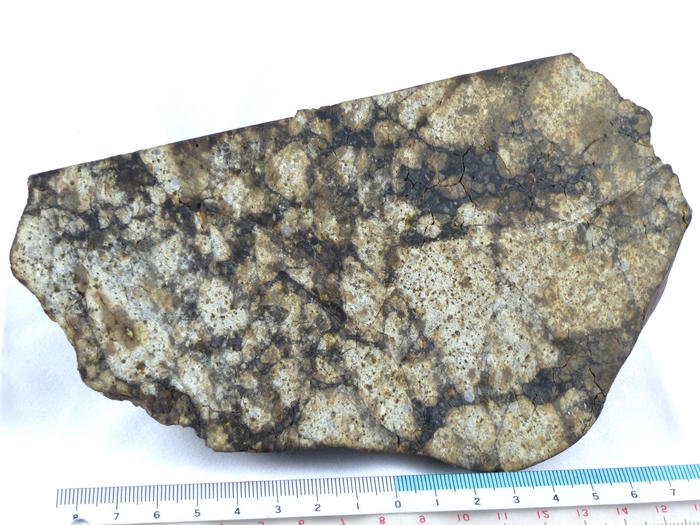Case 4: Impact Effects

Beeler
Small meteoroids do not strike the Earth’s surface at cosmic velocity because they are slowed down by the atmosphere. In contrast, smaller bodies like the Moon and asteroids have no atmospheric filter, so even small meteoroids impact their surfaces at very high velocities (typically several kilometers per second). The resultant impacts can produce dramatic changes in the target rock. Impact processes affecting the targets include impact melting, impact vaporization, and brecciation.
Exhibited on the top shelf are Tanezrouft 057 (CK4) [found in Algeria in 2002], Naryilco (L/LL6) [found in Queensland, Australia in 1975], Mifflin (L5) [fell in Wisconsin in 2010] and Beeler (LL6) [found in Kansas in 1924].
The second shelf holds Shaw (L6 impact-melt breccia) [found in Lincoln County, Colorado in 1937], Chico (L6 impact-melt breccia) [found in New Mexico in 1954] and Portales Valley (H6 impact-melt breccia) [fell in New Mexico in 1998].
The bottom half of the case shows Estacado (H6) [found in Texas in 1883], which contains a long shock vein of metallic iron-nickel, and Mayfield (H4) [found in Sumner County, Kansas in 1972], which contains a large (3 cm) impact-produced metal-sulfide nodule. Two shock-blackened chondrites are also exhibited: Farmington (L5) [fell in Kansas in 1890] and Taouz 001 (L6) [found in Morocco in 1991].
Also shown is a photograph of the LL impact-melt breccia LAR 06299. This rock contains many vesicles (holes derived from gas bubbles), formed by vaporization of volatile constituents during impact heating.
The bottom shelf holds samples of an H-chondrite regolith breccia called Plainview (1917). This meteorite formed at the surface of its parent asteroid and contains solar-wind-implanted noble gases, impact-melt-rock clasts, and fragments of carbonaceous chondrites. The latter samples were derived from foreign meteorite projectiles that collided with the Plainview parent asteroid at sufficiently low velocities to remain intact.
For more-comprehensive definitions, please see the Glossary.